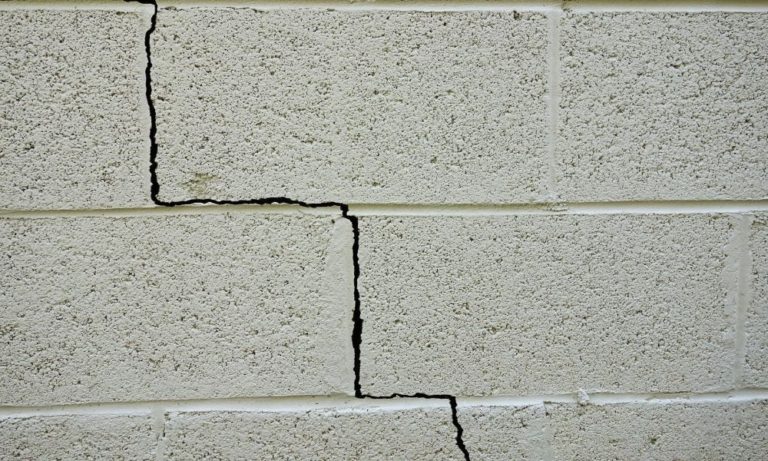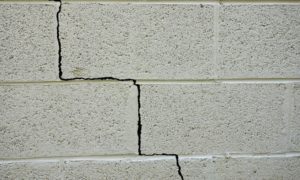There’s no question that Chicagoland is known for its winters. You know, the winters like the wonderful polar vortex—or how about that time we were colder than Mt. Everest and the South Pole? Just imagine what all that snow, ice, and horribly cold temperatures do to your foundation––and heaven forbid the moisture finds its way into your basement. You can protect your basement by getting it professionally waterproofed before winter. There are a few reasons why you should waterproof your basement before winter, and we’re going to break them down in our guide below.
The Moisture Freezes in Place
Every winter in Illinois is different, but one thing’s for sure—we’re probably going to get snow and ice. But Illinois doesn’t stop there. We can also count on getting a deep freeze after a snowstorm, because why not, right? All this moisture builds up over time and freezes the ground.
You’re probably wondering what the ground has to do with waterproofing your basement. When the ground freezes, the ice and soil expand. When the soil expands, it puts pressure on your foundation and causes cracks, which can in turn cause several issues. If your foundation itself cracks, you’re essentially welcoming moisture and cold air, which will make your heating bill go up. Once all that moisture unfreezes, it’ll essentially pour into your basement, and a basement flood in the winter is never a good time—trust us.
Prevent Your Basement From Flooding
Avoid Health Hazards
Basement Waterproofing Solutions
- Installing an interior or exterior drain tile system that collects water outside or under your basement.
- Installing a vapor barrier prevents water from seeping through your walls and channeling any moisture to the drain tile system.
- Installing a sump pump to eject any water collected by both the vapor barrier and drain tile.
Foundation Issues Are No Joke
As we said before, the freezing temperatures and moisture only cause major foundation problems. Of course, you’ll probably experience some foundation cracks. Luckily, cracks are relatively easy fixes as long as you call a professional to fill them early. The cold temperatures only accentuate the problem, so call sooner rather than later. The best way to prevent foundation damage from cracks, frost heaves, and frozen pipes is to waterproof your basement before it gets cold. The longer you allow a foundation problem to sit, the more damage it causes and the more expensive it’ll be to fix.
If you’re still wondering why you should waterproof your basement before winter, here’s the simple answer: it’s only going to save you money, trouble, and stress in the long run. Illinois winters are legit, to say the least, so protect your home’s structural integrity by waterproofing before it’s too late.
Check out our another blog post on Foundation Repair Mistakes To Avoid.
For the best basement waterproofing in Chicago, IL, and surrounding areas, call The Real Seal. We grew up in Illinois, so we know all too well what the winters are like. The best part about hiring The Real Seal is that we get the job done on time the first time around with fair prices. So, what are you waiting for? Call us today to set up an appointment.







2 Responses
My basement presently has no sump pump and there is no water penetration but in certain areas the humidity is higher than I want. I am a retired contractor who has read numerous articles about basement moisture and had three specialized basement water proofing companies come. One suggested a inside perimeter drain 2300 ft. The others suggested using dehumidifiers since no water is in basement. I am using now four dehumidifiers and basement humidity is under control less than 50%. I had a sewer drain line company check the drain tiles with a camera with 100 ft camera and found no clog in the four inch pvc drainage tiles. And I had one wall outside evacuated down about 13ft and 8 to ten ft wide, wall. Parched and coated with plastic and tons on drainage stone added and a tee coupling added if necessary for future. This expensive operation commented that the cove joints were not sealed but twenty years ago this cement to cement without elastic sealant was common. Thus my question is should I add two sump pumps at opposite wall ends? The problem is under floor moisture, floors are sealed and painted with epoxy. Help.
Hi Jerome!
Thank you for all of the information, we’d be happy to help!
First off, you did a lot of good things here. Dehumidifers are good to keep the humidity down, but 4 is a lot and that usually points to an underlying water issue, as you have stated. Very good that the sewer lines are clog free! Also very good that you sealed 2 of the walls.
As for the Cove Joint Seepage, you are correct, the “cold joint” that was made without a sealant was very common and at the root of many of these issues. If you have an underlying issue with water underneath the floor, you will need to install a Drain Tile System to take care of that. No amount of sealing floors, epoxy, or waterproof paint will ever stop hydrostatic pressure. All of those products are good marketing gimmicks, but don’t get the job done when it comes to floor seepage.
The Inside Perimeter Drain is going to be the route you want to take. This will take care of any floor or cove joint seepage. It will be important to seal the cove joint area where they put a dimple board as well in order to keep moisture down. The sump pit should also have a sealed lid for the same reason.
Once you have that system installed, you should be able to get rid of most of those dehumidifiers. Additionally, we would recommend you be sure to extend your gutter downspouts 15 feet MINIMUM from the home and regrade the yard around the home so the soil grades away from the home, promoting positive water drainage.
Does this answer all of your questions? Feel free to comment back or send us an email through our website and we can help any way we can!